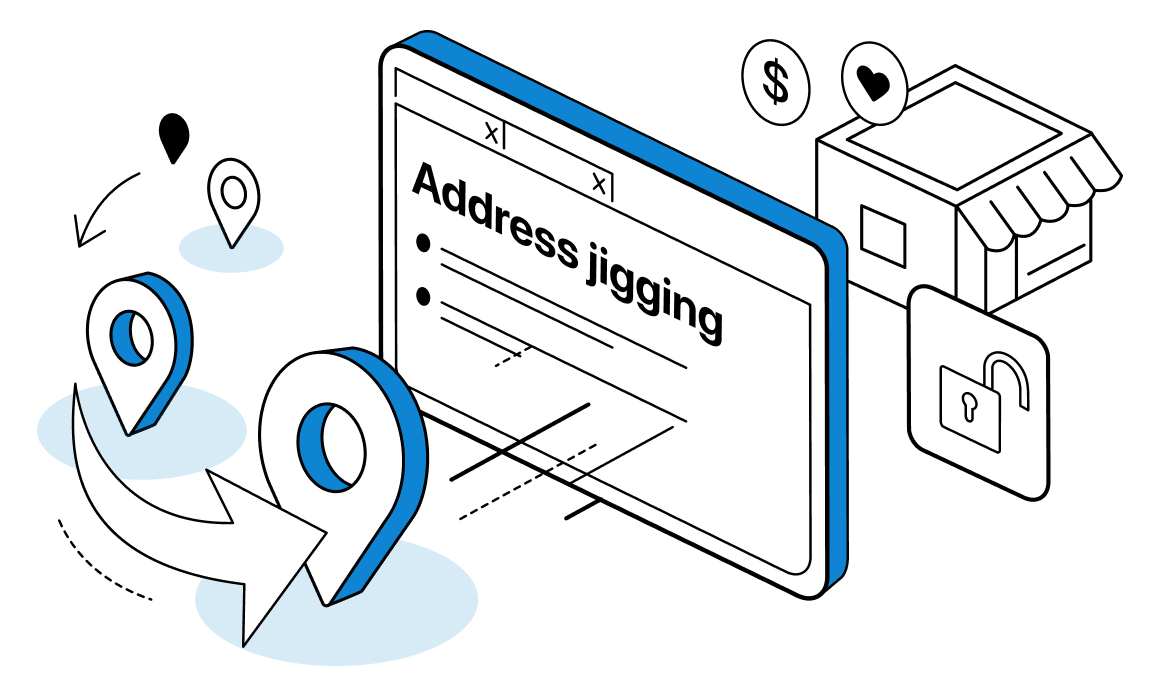Private proxy solutions can easily make any of your online tasks more secure and private. Proxy can have different types of protocols and in this article we will look deeper at SOCKS5 and discuss how to test SOCKS5 proxy in different scenarios.
How Does a SOCKS5 Proxy Work?
SOCKS5 can be described as the popular proxy protocol that can help you to access restricted sites and maintain anonymity online. SOCKS5 can allow you to change IP and hide your real address from all the sites that you are visiting.
SOCKS5 is the protocol that works on the 5 layer of OSI model. In other words, this private proxy works as the gate or tunnel between your device and designated Internet address. When you are redirecting requests, your IP changes to the one of the server. This way, sites and pages think that all the connections are coming from the server side. SOCKS4 proxies work in the same manner, but the 5 version can also support both UDP and TCP options.
The UDP is a new protocol that can guarantee you a more stable and powerful connection over a long period of time. Depending on your server location, speed of connection can be much higher with SOCKS5 compared to the SOCKS4 option.
Plus, SOCKS5 protocol in most cases can not write data over the headers in packets of data. This feature increases performance and stability of connection in most situations, but at the same time makes it a bit less secure due to personal data that can be stored in the headers. Alternatively, you can use static residential proxies and guarantee yourself access to all needed sites, without additional troubles.
SOCKS5 also can be a right choice if you want to connect and participate in peer-to-peer sharing websites. SOCKS5 can transfer small packets of information, making it more fast and trustful for P2P work.
It is possible to find and use the free VPN or SOCKS5 proxies. However, this option in most cases will put your personal data at risk. Free proxy providers still need to pay for instances, and in most cases it will be paid by your data. For comfortable daily use, you can buy residential proxies and access any sites that you want freely.
Setting Up a SOCKS5 Proxy
The process of setting up a SOCKS5 proxy is pretty simple and can be managed in several steps. In Windows 10 or 11 based devices, you need to go to the settings app and open the network tab. There you need to locate the proxy option and select the manual setting. Now you can use all the needed information for connection and click save. This setting allows you to use most of the popular proxy protocols, whether it is SOCKS5 or 4, residential or datacenter proxy. Now, open a browser and check if the proxy setting started working.
In MacOS based systems, the proxy setting follows the same logic. To start, go to the settings and open the network tab. Now open the advanced menu and choose proxies. Select the type you want to and write down all the data needed for connection. Then you can save changes and watch if the system follows your settings.
How to Test Socks5 Proxy With cURL
If you want to install SOCKS5 behind hybrid runtimes for Anypoint Monitoring, you can face some problems. To test if SOCKS5 proxy is working properly, you can use a test for use of the backend resources of Anypoint Monitoring. You can perform it with command – curl -vv –proxy socks5h://, and request to the remote host and port through HTTP or HTTPS. For the first command you need to add the client, password, host and port after two slash lines.
In case of a successful SOCKS5 proxy test, you need to receive any HTTP traffic without timeouts and any other connection problems. You need to do this testing and collect a list of results for every response on every host in Anypoint control panel.
Testing the Status of a SOCKS5 Proxy in Python
If you want to study how to test Socks 5 proxy in Python, you first need to be familiar with using and implementing libraries. Python language has a good number of libraries that can be used to test SOCKS5 proxy online.
To start, you can utilize PyCurl that can help with HTTP requests through the proxy. Alternatively, look at the Socksipy that can provide a wrapper for instances. Both of these libraries can create a full connection to any of your servers.
With the SOCKS5 protocol, you can test the working status by looking at the response. With all the needed connections to the server through libraries, you can use a custom script to send the first data package to test the status. First data package follows the pattern of displaying SOCKS version first, number of methods for authentication second, and used method third. To this request, the server should respond with the version of the SOCKS and authentication method. If the version is 5 and authentication stands at 0, then the test Socks5 proxy is passed, and we can use it to send data further. For example, you can test and use a datacenter rotating proxy this way.
Frequently Asked Questions
Please read our Documentation if you have questions that are not listed below.
-
What are SOCKS proxies?
SOCKS is a protocol for proxy, that allows them to redirect your traffic through a server. SOCKS kind of proxies use a TCP connection to send and pass data through the server.
-
What proxies protocols to choose between SOCKS4 and SOCKS5?
SOCKS5 proxies is a newer and more powerful version of the protocol. However, not all the apps or browsers that you use can support it. In some cases, SOCKS4 can make the work just as good, so the choice ultimately depends on your case.
-
What is the difference between proxy SOCKS4 and SOCKS5 proxies?
SOCKS5 proxies, unlike 4 versions, can work both with TCP and UDP connections. SOCKS5 also utilizes SSH tunneling for encrypting data in this way. Plus, the 5 version of SOCKS supports more advanced versions of authentication.
Top 5 posts









Proxy and VPN technology is one of the basic instruments when it comes to your day to day online security and anonymity. Android OS allows you to use proxy servers both in mobile and Wi-Fi connections. In this article, we will discuss the benefits of proxy tools and tell how to configure proxy for Android devices.